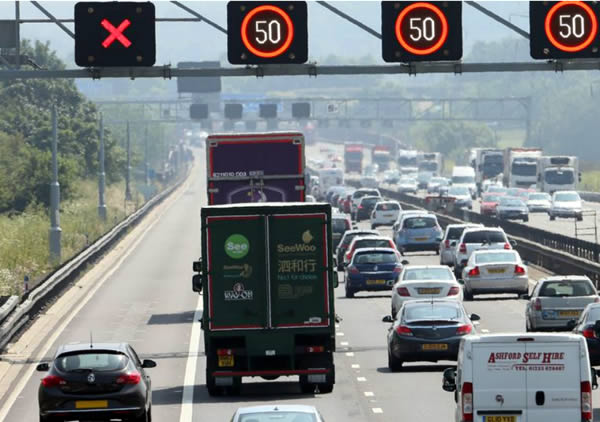Highway Code To Include New Smart Motorways Guidance
Published Date: 30th Jun 2021
A new section and guidance on Smart Motorways has been drafted by Highways England to for inclusion in the Highway Code. This is in response to concerns from motorists and several leading automotive organisations about their safety.

Smart Motorways are sections of UK’s busiest major highways that employ several strategies for handling congestion, often intermittently at peak times. These strategies include using the hard shoulder as an extra lane for traffic and the use of variable speed limits.
The government has come under increasing pressure about Smart Motorways after they were labelled in some quarters as ‘death traps’, amid some calls for them to abolished.
Some of the common complaints by motorists are a lack of clear road signs/direction, and confusing variable speed limits that can cause motorists to brake heavily. Probably most importantly the potential danger of having nowhere to stop safely in the event of a breakdown, along with the use of the ‘Red X’ sign to denote that a lane should not be used.
Hard shoulders can be dangerous places at the best of times, but on Smart motorways where the hard shoulder is employed as a live traffic lane, things can get very tricky if you breakdown. It’s been pointed out that some of these stretches of Motorways can leave drivers stranded, feeling vulnerable and with no ‘SOS’ phone within reasonable distance in some cases.
On some stretches of the UK’s busiest highways the use of the hard shoulder as an additional lane has become a permanent fixture, while in other areas the hard shoulder is used intermittently at peak times, these are known as ‘dynamic’ hard shoulders.
The on/off nature of dynamic systems has been branded confusing for drivers and the government has committed to either scrapping or converting these to permanent systems. The changes are likely to be completed by 2025 but in the meantime the additional Highway Code guidance on dynamic systems is designed to make them safer and motorists more aware of the guidance.
The new guidance will include instructions for motorists on:
- What to do in case of a breakdown on an ‘all lanes running’ stretches of motorway, effectively without a hard shoulder and other related safety guidance.
- Guidance on ‘variable’ or ‘dynamic’ smart motorways where the hard shoulder is in use intermittently and at peak times.
- The use of ‘Red X’ signs to denote a lane closure for road works or a recent breakdown/accident.
- The use of variable speed limits to reduce congestion and how safety cameras are used on Smart Motorways.
The revised Highway Code will also include new guidance on some other issues that are key contributors to accidents on Britain’s motorways including driver fatigue, unroadworthy vehicles, unsafe towing and driving too close to the vehicle in front of you (tailgating).
